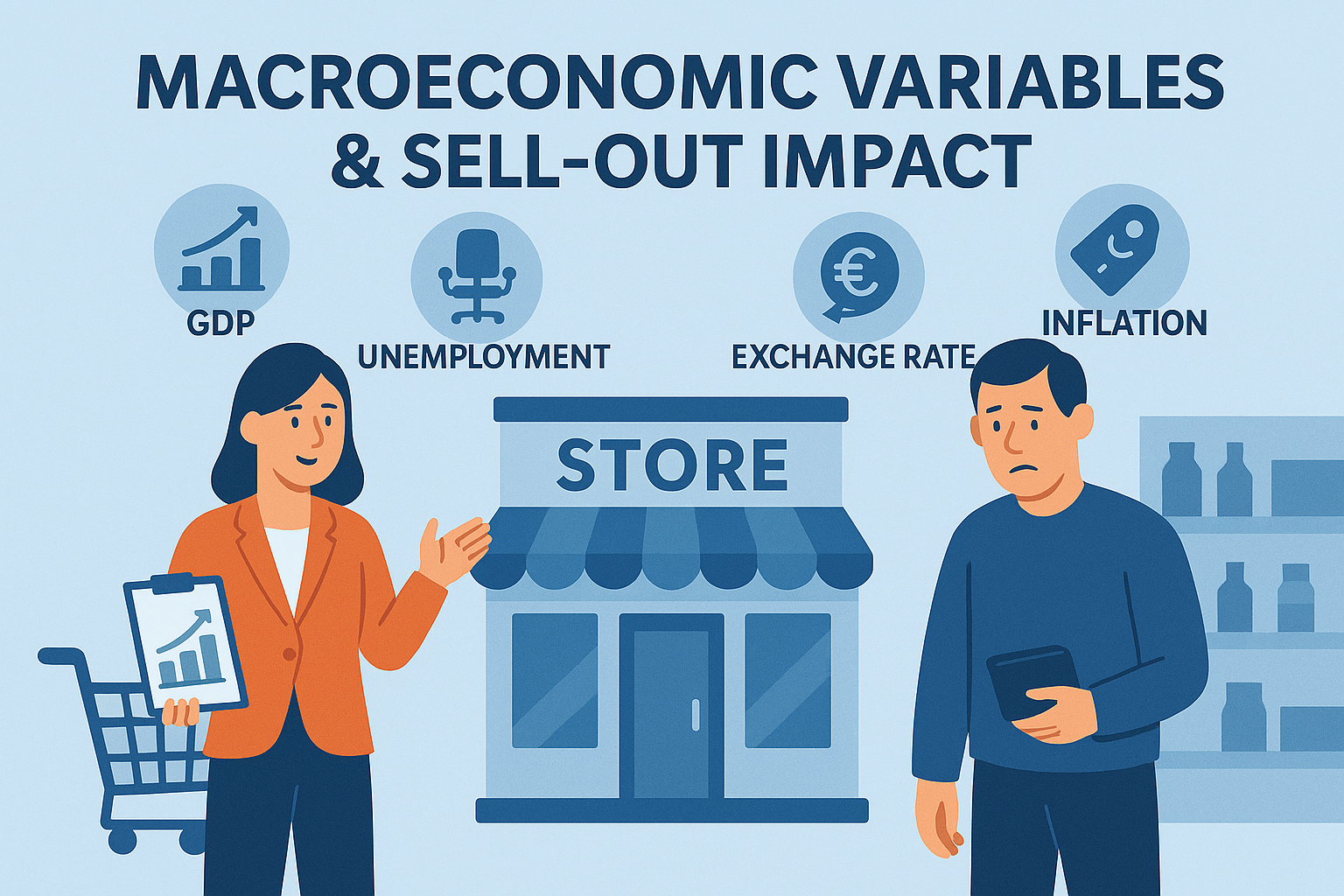
How External Variables Influence Category Sell-Out Trends
When analyzing category sell-out trends, internal factors such as pricing, promotions, and availability often take center stage. However, external variables like macroeconomic indicators and shifts in consumer behavior can have a profound and sometimes underappreciated impact on sales dynamics.
Starting with Simple Correlations
To begin understanding these relationships, a simple correlation analysis between each external variable (e.g., inflation, unemployment rate, consumer confidence, traffic patterns) and the sell-out trend is a good starting point. This helps identify which factors seem to have a strong positive or negative association with sales movements.
"Correlation is an invitation to investigate — not a confirmation of causality."
― Retail Academy
Understanding the Limits of Simple Correlations
Simple correlations, while informative, can be misleading. External variables are often interconnected. For instance, inflation and unemployment might rise simultaneously, making it difficult to isolate which is truly influencing the sell-out trend. This is where the concept of partial correlation becomes essential.
The Power of Partial Correlation
Partial correlation allows us to measure the relationship between an external variable and sell-out while controlling for the effects of other variables. This method unveils the "pure" influence of each factor, helping to distinguish true drivers from noise or spurious effects.
"Partial correlations separate the meaningful signals from the misleading echoes."
― Retail Academy
Analyzing Recent Periods vs. Full History
Another important dimension is the time frame of analysis. Relationships between external variables and sell-out can evolve. For instance, during a recession, unemployment might become a dominant predictor, while in stable periods, consumer sentiment might matter more. Therefore, it's critical to compute correlations not just over the entire dataset but also over recent periods (e.g., the last 6 or 12 months).
Comparing Recent and Historical Dynamics
By comparing recent partial correlations with historical ones, we can detect which variables have gained or lost influence. This insight allows brands to dynamically adjust their models, focus areas, and marketing strategies based on the current macroeconomic climate.
Strategic Implications for Category Management
Integrating partial correlation analysis into your sell-out monitoring toolkit transforms decision-making. It helps anticipate shifts earlier, allocate resources more effectively, and build more resilient forecasting models that adapt to changing external realities.
"Success in retail is not just about internal excellence — it's about mastering the external environment too."
― Retail Academy
Ready to analyze external drivers of your sell-out with zero setup?
Subscribe now and get immediate access to our ready-to-use Excel (fill it with your data) & Python (Just run the model) tool — specifically designed to help you correlate macroeconomic and behavioral variables with your category’s sell-out trends. No coding, no waiting — just smart analysis, fast.

